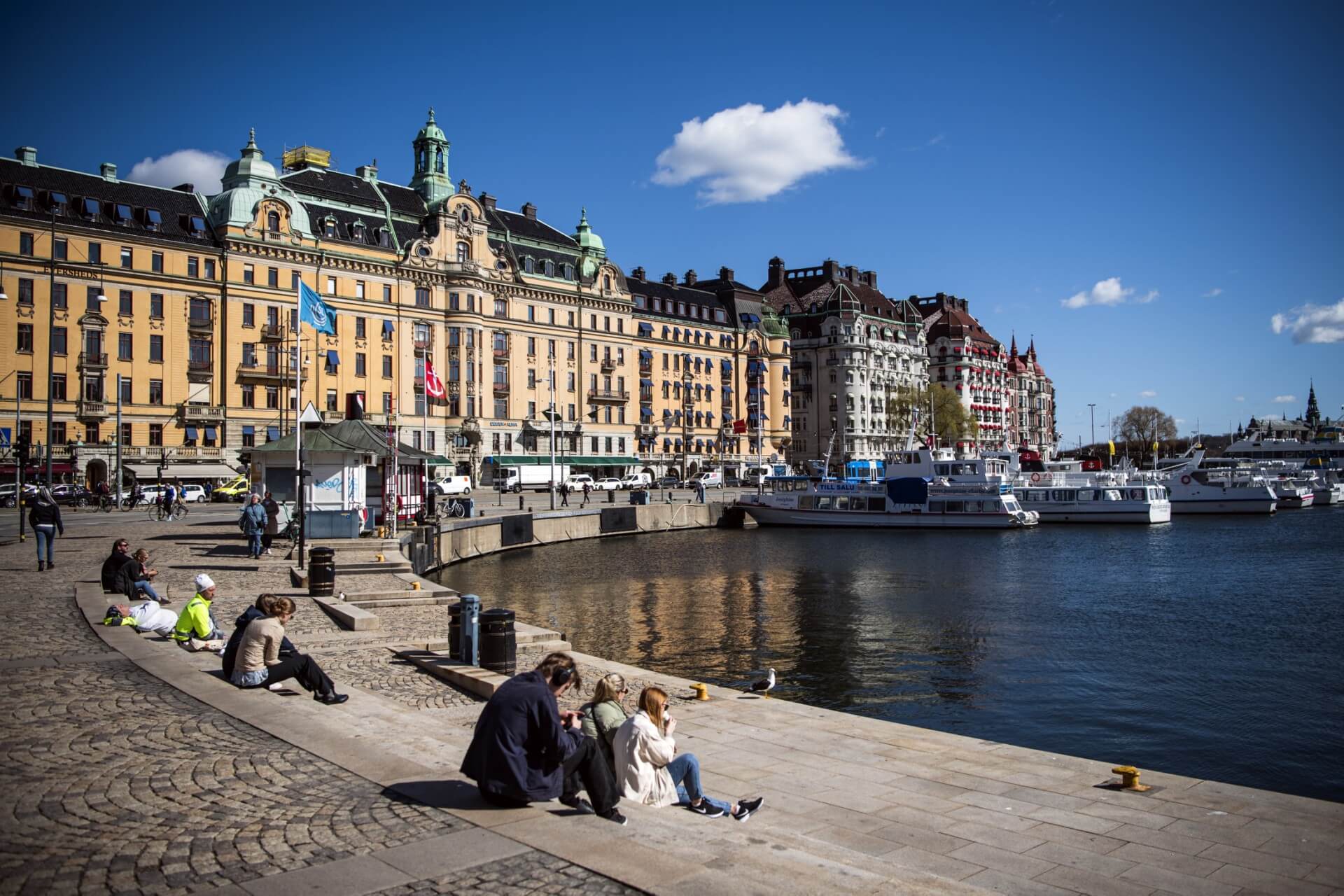
The UK, US, Australia, and Canada may be famous study-abroad destinations, but if you look to the north, you might find the best Scandinavian countries for the perfect blend of education and experience.
Don’t believe us? Consider these stats:
- Countries like Finland, Norway, Sweden, and Denmark have the highest number of residents aged 30 to 34 years old with university degrees, surpassing the average in Europe
- The best Scandinavian countries are home to 68 Nobel Prize winners
- Finland is the world’s #1 happiest country, with the other main Nordic countries all ranked in the top 10
And there are probably even more figures to impress the rest of the world. For students, however, there’s another factor that makes this region so compelling: affordability.

The best Scandinavian countries are home to some of the most learned people in the world, including 68 Nobel Prize winners. Source: AFP
The best Scandinavian countries are great for budget-strapped students
Anyone who has paid 110 Norwegian kroner (US$10) for a pint of beer (in 2025) in Oslo or 25 to 45 kroner (US$4 to US$7) for coffee in Copenhagen (the priciest in the world) would think it’s a contradiction to say studying in the best Scandinavian countries is a cost-saving affair.
But compare them to the likes of the US, UK, Australia, and Canada, and you’ll see how it’s possible to pay so much lesser for a university degree.
Public universities in these countries often offer tuition-free or low tuition to international students.
This not only reduces the financial burden on students but also allows them to access education that might have been out of their reach.
The best part is this low tuition rates are paired with some of the highest standards of living in the world.
Public services are efficient public services. It’s safe to be anywhere at any time. There are healthcare and social welfare systems for the sick and vulnerable.
Little surprise, then, that the best Scandinavian countries consistently perform well in global surveys.

Tourists photograph the Northern Lights at Lake Thingvellir, Iceland. Source: AFP
This includes the QS World University Rankings for 2025. As many as 29 universities from the Nordic region were featured — Finland has nine, Sweden has eight, Denmark has five, Norway has six, and Iceland has one.
These figures are notably smaller compared to countries like the UK and the US. However, this is due to the fact that the Scandinavian countries are significantly smaller in size and have fewer universities.
In fact, when you consider the combined population of Sweden, Norway, Denmark, Iceland, and Finland – approximately 26 million – it’s less than half the population of the UK, which is around 69 million and nowhere close to the US, which is about 346 million.
5 Scandinavian countries with prestigious and affordable universities for students

Sweden is one of the best Scandinavian countries for international students to choose due to its high quality of life. Source: AFP
1. Sweden
The education system in Sweden is designed to equip you with the practical skills necessary to ensure you are more employable once you graduate.
Studying in Sweden is not the most affordable due to the high cost of living, which could go up to 1,250 euroes (US$1,313) per month – and that’s excluding rent and tuition fees.
Your cost of living and tuition fees varies depending on the city and university you choose to study in.
For example, if you choose to stay in Stockholm, you can expect to pay around 16,398.37 kroner (US$1,545) for a one-bedroom apartment in the city. Tuition fees at Stockholm University are approximately 90,000 kroner (US$8,471) for a degree in Humanities, Social Sciences or Law degree and 140,000 kroner (US$13,173) for a degree in Sciences.
The good news is that Sweden has several tuition-free universities that are free for students from the European Economic Area (EEA) and European Union (EU) and those with a permanent Swedish residence permit.
In comparison, international students outside of those countries will pay between 7,500 to 25,500 euros (US$7,877 to US$26,784) in tuition fees per year.
Linköping University — ranked within the top 200 global universities for disciplines like arts and humanities, business and economics, clinical and health, and more — charges 900 kroner (US$84) for standard application fees, with tuition fees ranging from 80,000 and 136,000 kroner (US$7,530 to US$12,801) if you are not from the EU, EEA, or Switzerland.
Some of Sweden’s other prestigious universities include:
- #74, KTH Royal Institute of Technology
- #75, Lund University
- #103, Uppsala University

Did you know that LEGO was invented in Denmark, one of the best Scandinavian countries in the world? Source: AFP
2. Denmark
From a design-savvy capital to revitalised smaller cities, Denmark is no longer a sleepy Scandinavian country for the traveller in search of culture, food and history.
The country is now a must-go destination for tourists, and with the rise of its universities, an educational hub too.
With institutions providing 1,300 courses and over 700 degrees, the best part is that most of these programmes are taught in English. Denmark has over 600 programmes that are taught in English.
What’s more, the Danish education system shares excellent links with the industry, helping students gain critical skills.
Higher education in Denmark is free for students from the EU/EEA and Switzerland. For other students, the annual tuition fee ranges from 6,000 to 16,000 euros (US$6,300 to US$16,800).
If you calculate what you stand to earn as a graduate of Danish universities, then these are worthwhile investments to make.
In Denmark, if you have a bachelor’s degree, you can earn 364,000 kroner (US$34,276) annually. If you have a master’s or a PhD, you can stand to earn a monthly income of 472,000 kroner (US$44,440) and 607,000 kroner (US$57,164), respectively.
Some of the country’s top institutions include:
- #100, University of Copenhagen
- #109, Technical University of Denmark
- #144, Aarhus University
3. Finland
Finland is one of the best Scandinavian countries for students to study in. The main reason is that the Finns are among the happiest people in the world.
This Nordic nation is the #1 happiest country in the world for six years in a row, according to the World Happiness Report.
The country’s capital, Helsinki, is renowned for its high standard of living, excellent education and efficient public services.
It is also home to the University of Helsinki, which ranks #117 in QS World University Rankings and is one of Finland’s oldest and largest educational institutions.
The university launched the Helsinki Think Company, an initiative in collaboration with the city’s government. This innovation centre aims to bring students, academics and entrepreneurs together to fast-track the process of transforming good ideas into commercial enterprises.
Studying in Finland will not only offer you access to initiatives like these but a world-class education that is affordable as well.
On average, your monthly expenses in Finland would range from 900 to 1,000 euros (US$944 to US$1,049). This, however, does not cover tuition fees.
The amount spent on your cost of living varies depending on which city you choose to study in. For example, in Helsinki, you would pay 2,044 euros (US$2,144) monthly for rent and other living expenses.
Tuition fees at the flagship University of Helsinki are between 13,000, 15,000 and 18,000 euros (US$13,641, US$15,740, and US$18,888) per academic year, depending on the programme.
Like most tuition-free universities in Europe, students who are citizens of the European Economic Area (EEA) and the European Union (EU) or have a permanent Swedish residence permit are exempted from paying tuition fees at Finnish universities.
Other notable universities in Finland include:
- #113, Aalto University
- #336, Lappeenranta-Lahti University of Technology LUT
- #344, University of Oulu

Explore Norway as you study at one of the country’s many tuition-free universities. Source: AFP
4. Norway
This may come as a shock, but Norway provides free education to all international students. The country believes that everyone should have access to quality education regardless of their background.
Public universities in the country are fully funded, so students don’t have to pay tuition fees. However, you will have to pay the semester fees and your living expenses.
Established in 2016, Nord University might be one of the newer educational institutions in the nation. However, despite being new, it upholds a commitment to excel in education.
The university offers a number of programmes taught in English, spanning all levels.
As part of the application process, students are only required to pay an 815 kroner (US$73) semester fee.
The best part? There are not just one but several scholarships available to help you make your study abroad dreams come true. Some of the scholarships available are:
Here are three other popular universities in Norway to know:
- #119, University of Oslo
- #264, Norwegian University of Science And Technology
- #291, University of Bergen

Study in Iceland and enjoy the beautiful scenery as you gain a world-class education. Source: AFP
5. Iceland
Home to a thousand-year-old parliament, natural wonders and the Northern Lights, Iceland is one of the best Scandinavian countries for international students.
Here, you will find several universities that offer world-class education that is affordable for international students.
In the capital city stands one of the best universities in Iceland for international students, Reykjavík University.
The institution focuses on teaching and research while emphasising interdisciplinary work. There are several English-taught courses at the undergraduate level, while master’s and PhD programmes are fully taught in English.
This is the university that also opened the first Artificial Intelligence laboratory in Iceland. They work with Honda to create software for the ASIMO humanoid robot.
While the tuition fees at Reykjavik University are as low as 467,000 kroner (US$3,362) per year, if you are looking for the cheapest university in the country, the University of Iceland is the place for you.
Not only is it the cheapest, but it is also the largest and oldest institution for higher education in the country. International students only have to pay a 75,000 kroner (US$540) registration fee annually.
Today it is one of the top universities in Iceland and has expanded into five different schools: Social Sciences, Health Sciences, Humanities, Education, and Engineering and Natural Sciences.
Other universities available in Iceland include:
Disclaimer: This article was last updated on February 26, 2025.










